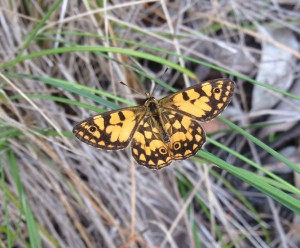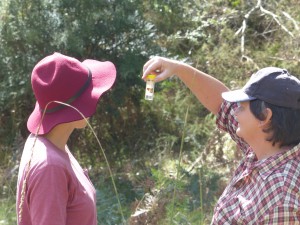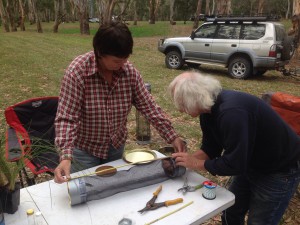Latest news on the Silver Xenica butterfly translocation project
The Silver Xenica butterfly translocation project has completed year one in the recovery of the species in South Australia. 40 females and 20 males have been carefully captured and transported from near Dartmoor (Vic) to Glencoe (SE SA) since our last blog and I thank the important help from NGT staff, volunteers and students from Glenburnie Primary School during this process.
A reconnaissance trip in late March confirmed that the butterfly was flying although very few females were observed. Males emerged first which is usual in the Nymphalidae with females often known to follow the males in subsequent days/weeks. We then waited a week or so for fine weather, then the crew set out to start the translocation process shortly after Easter.
Numerous donated tins were converted into small holding cages to house the food plant and captured females. Andy and Sheryl were busy putting them together.
Laying of eggs onto the food plant was problematic and unexpectantly slow, so by the second day cages were transported to the release sites mid afternoon and all butterflies released. Transects were walked to record numbers seen flying at and close to the release sites. Monitoring indicated that butterflies hung around (but in small numbers) so were difficult to find post-release.
The final step in the 2018 translocation was to capture late flying females (more inclined to lay) to gather more eggs which were then transported, placed out at the recipient sites and provided to Glenburnie PS for rearing. A short video was produced for the students which you can view here.
This activity forms part of the Restoring Under-represented Ecological Communities project, which is supported by Natural Resources SE and the Australian Government.



